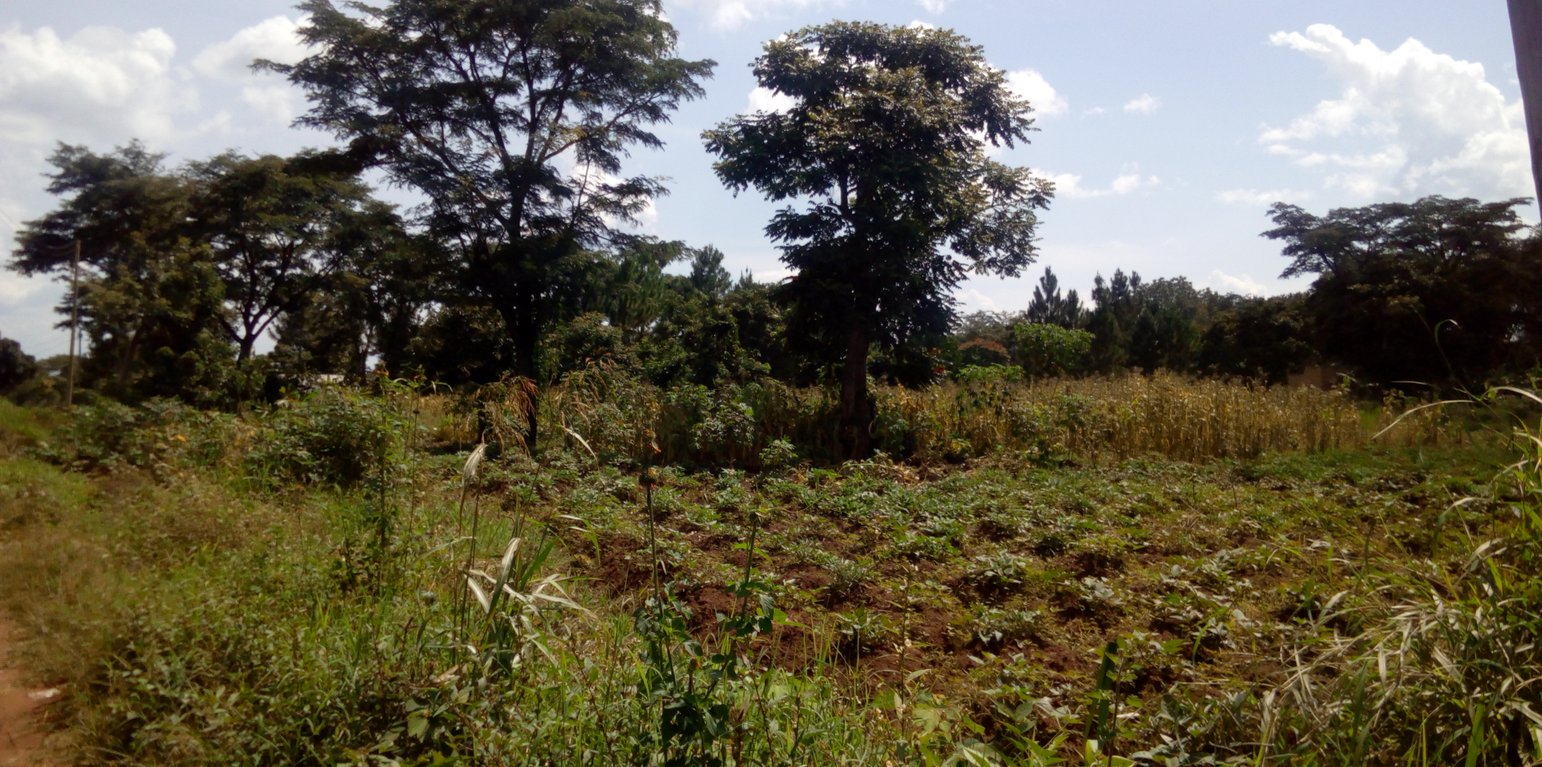



In relatively flat areas such as those in semi-arid parts of northern Uganda, strong winds can exacerbate damage to crops and animal structures in addition to increasing evaporation from watering troughs for animals. To reduce the risk of these occurrences, farmers maintain trees interspersed in the croplands or paddocks to intercept the strong winds.
Trees used for this purpose are generally native species because they grow large in diameter (> 60 cm dbh) and develop wide crowns (~20 m diameter). Some of the native tree species for this technology include Shea tree (Vitellaria paradoxa), and Tido (Khaya grandifoliola). The trees are not arranged in any specific pattern since they establish naturally, and are managed to grow and pruned appropriately to better reduce the impact of strong winds. The spacing between trees can range from 10 to 30 meters depending on the size but also on the location of target structures such as homestead and animal structures. By periodically pruning these trees, farmers also get wood for fuel while reducing the risk of injury from branches falling down as they deteriorate with age. The trees also provide shade in homesteads and in grazing lands. Pruning allows younger branches to emerge and ensures the health and longevity of the trees for several decades.
What farmers like about the technology is that the cost of establishment is generally very low as the care and pruning of trees does not require the purchase of any expensive equipment, planting materials are not required, and there is no labour required for planting. The technology does not take so much land since the trees are sparsely scattered in the crop or grazing land or along the boundaries. Also, the trees provide firewood when the branches are pruned. Sometimes farmers locate bee hives in these trees, thereby ensuring income diversification for the household.
Farmers dislike this technology because native tree species take long (15-20 years) to grow to appropriate sizes to effectively reduce the impact of strong winds and they are also in high demand for charcoal production. Furthermore, they can only be retained where they naturally grow, thus not being very effective as wind breaks as would be the case for those trees that are planted in preferred locations in the landscape. It is labour-intensive to prune these generally large trees with complex crowns, especially when they are fully grown. The trees also acts as hosts for birds, which are formidable pests to crops such as sorghum, simsim and maize in the gardens. The roots of trees extend to large areas within the gardens and can potentially reduce the yield of the nearby crops if root-pruning is not done. These trees also provide additional benefits such as shea from Vitellaria paradoxa that are useful as nutritional supplements. Timber from Khaya grandifoliola is highly valuable and earns additional income to the household.
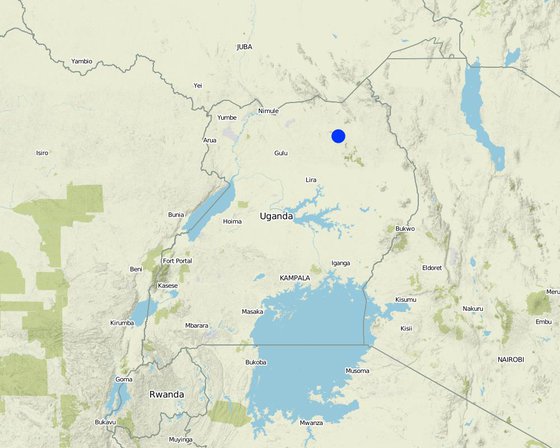
Lieu: Latanya s/county Pader District, Northern, Ouganda
Nbr de sites de la Technologie analysés: 10-100 sites
Diffusion de la Technologie: répartie uniformément sur une zone (approx. < 0,1 km2 (10 ha))
Date de mise en oeuvre: 1950; il y a plus de 50 ans (technologie traditionnelle)
Type d'introduction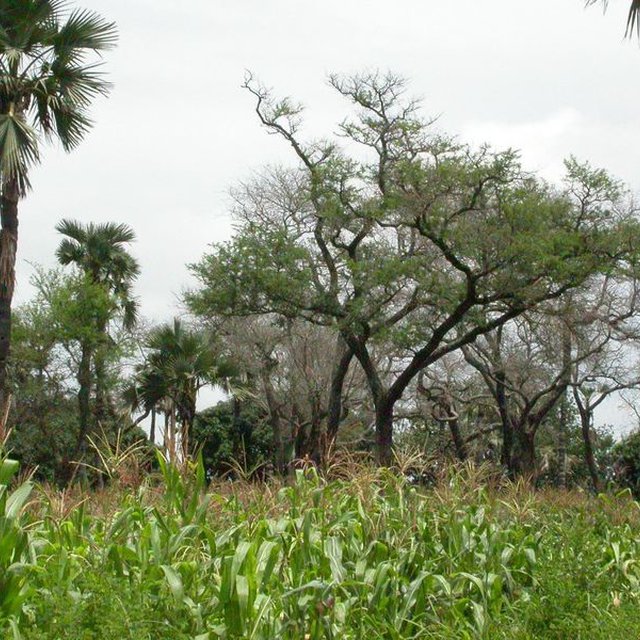
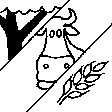


Spécifications techniques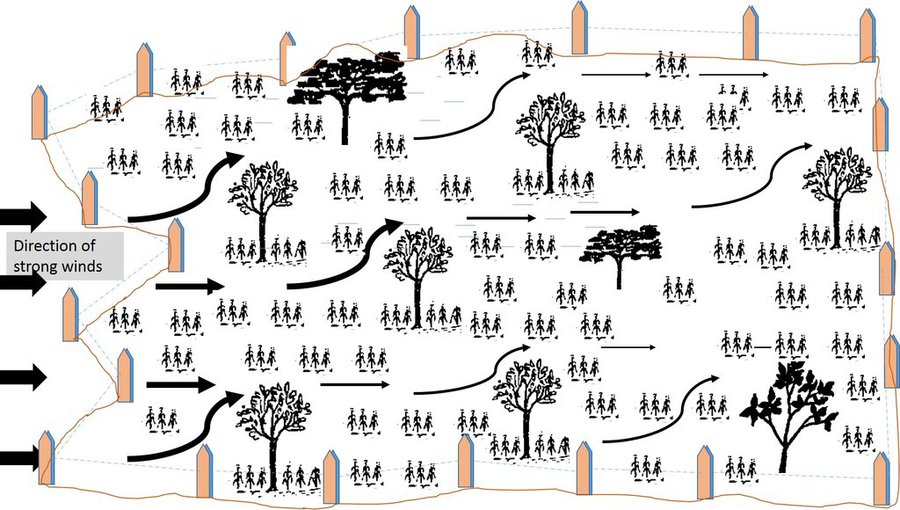
Auteur : Bernard Fungo
Trees randomly scattered within cropland
Spacing of trees ranges from 10 to 30 meters Size of trees ranges from 10 to > 60 cm diameter and 5 to 30 meters in height |
|||||||||||
| Spécifiez les intrants | Unité | Quantité | Coûts par unité (Uganda Shilings) | Coût total par intrant (Uganda Shilings) | % des coût supporté par les exploitants des terres |
| Main d'œuvre | |||||
| Labor | 1 | 40,0 | 2000,0 | 80000,0 | 100,0 |
| Coût total de mise en place de la Technologie | 80'000.0 | ||||
| Spécifiez les intrants | Unité | Quantité | Coûts par unité (Uganda Shilings) | Coût total par intrant (Uganda Shilings) | % des coût supporté par les exploitants des terres |
| Main d'œuvre | |||||
| labor | 1 | 40,0 | 2000,0 | 80000,0 | 100,0 |
| Coût total d'entretien de la Technologie | 80'000.0 | ||||